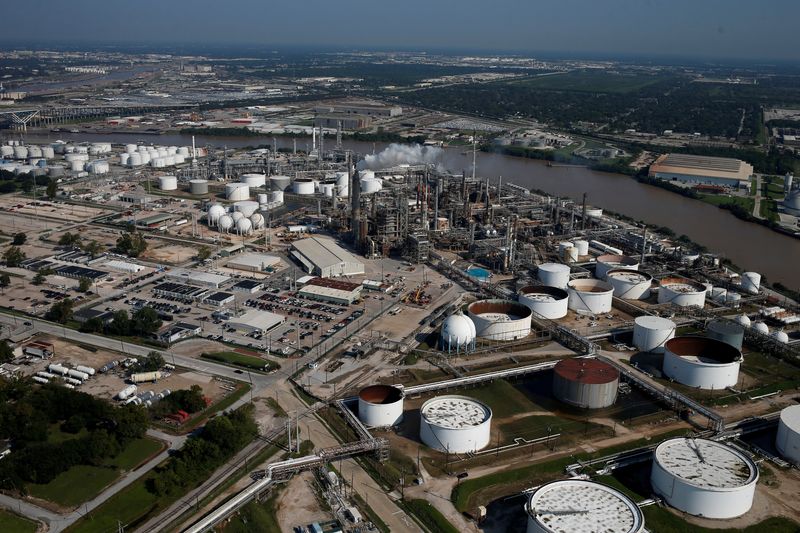
By Nicole Jao
NEW YORK (Reuters) – U.S. oil refiners are expected to report sharply lower second quarter earnings from a year ago after a listless summer driving season that weakened refining margins, energy analysts said.
Refiners ramped up processing capacity in the three months ended June 30 to 93.5%, compared with 91% in the prior-year period, to meet an expected spike in gasoline and diesel fuel demand that ultimately fell short, according to the Energy Information Administration.
Rising diesel inventories over the quarter, fueled by new refineries in the Middle East and higher exports from China, shrunk refining margins and cut into profits, analysts said.
“Refining cracks weakened through the second quarter,” TD Cowen analyst Jason Gabelman said. “It caught investors off guard.”
BP (NYSE:BP) and Exxon Mobil (NYSE:XOM) said earlier this month that lower refining margins, in part due to weak fuel prices, would have a negative impact on their second-quarter results. The companies report on July 30 and Aug. 2, respectively.
The U.S. gasoline crack spread, which is the difference between gasoline and crude oil futures, fell to $22.02 a barrel in June, the lowest since February. The diesel crack spread traded at a two-year low of $22.22 a barrel in June.
Valero Energy (NYSE:VLO), which is the second-largest U.S. refiner by capacity, is set to kick off refiner earnings on Thursday, with analysts forecasting profits of $2.60 per share, down from $5.40 a year ago, according to data from LSEG.
Shares of Valero are down around 14% since the end of the first quarter, easing earlier gains.
Marathon Petroleum (NYSE:MPC), which is the top U.S. refiner by volume, is forecast to report per share profit of $3.22 on Aug. 6, compared with $5.32 a year ago, according to LSEG estimates.
Phillips 66 (NYSE:PSX), meanwhile, is expected to report earnings at the end of the month of $1.98 per share, compared with $3.87 a year ago, LSEG estimated.
Looking ahead, a combination of soft gasoline demand and higher global diesel supply could persist and continue to limit margins in the coming months.
Operators on the U.S. West Coast could be forced to scale back refinery runs in response to the poor margin environment, said Matthew Blair, downstream research director at financial firm Tudor, Pickering, Holt and Co.

U.S. West Coast’s refinery margins for gasoline and diesel fell below average this spring, according to the EIA.
“With summer coming to a close, demand will fall further. Not much to look forward to for refiners,” said Patrick De Haan, a petroleum analyst at GasBuddy.com.
This post is originally published on INVESTING.


